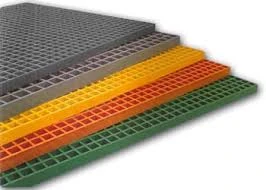loading...
- No. 9, Xingyuan South Street, Dongwaihuan Road, Zaoqiang County, Hengshui, Hebei, China
- admin@zjcomposites.com
- +86 15097380338
- Welcome to visit our website!
Enhancing Safety with Anti-Slip Nosing Solutions for Various Surfaces
Anti-Slip Nosing Enhancing Safety and Aesthetics in Architecture
In an era where safety and aesthetics go hand in hand, the significance of anti-slip nosing cannot be overstated. This architectural feature serves as an indispensable component in safeguarding individuals from slips and falls, which are often caused by wet or uneven surfaces. Anti-slip nosing, typically made from various materials such as rubber, metal, or composite substances, is strategically installed on the edges of stairs, ramps, and pathways to enhance grip, visibility, and overall user confidence.
Understanding Anti-Slip Nosing
Anti-slip nosing refers to the protective strip applied to the edge of a stair tread or pathway, designed to provide superior traction. Its primary function is to minimize the risk of accidents in high-traffic areas, particularly those exposed to moisture, such as entrances, pools, and restrooms. By incorporating a slip-resistant surface, it acts as a barrier against dangerous falls, making it a vital feature in both residential and commercial properties.
Key Benefits of Anti-Slip Nosing
1. Safety Enhancement The most significant advantage of anti-slip nosing is its ability to reduce slip risks. With textured surfaces that enhance grip, it provides secure footing, especially in adverse weather conditions like rain or snow. This is crucial in public spaces where many individuals traverse daily.
2. Improved Visibility Many anti-slip nosings come in bright colors or with luminous strips that enhance visibility, particularly in low-light conditions. This feature alerts users to changes in elevation, such as the edge of a stair, helping prevent falls.
anti slip nosing

3. Durability and Maintenance Anti-slip nosing is engineered to withstand heavy foot traffic and the wear and tear that comes with daily use. Constructed from robust materials, it is designed for longevity, requiring minimal maintenance. Regular cleaning is typically sufficient to keep it looking great and functioning effectively.
4. Aesthetic Appeal Anti-slip nosings are not only functional but can also elevate the design of a space. Available in various colors, finishes, and designs, they can seamlessly blend with the existing architecture or act as a stylish contrast, enhancing the overall aesthetic of a building.
5. Accessibility Compliance Incorporating anti-slip nosing can aid in compliance with safety regulations and building codes, particularly those aimed at ensuring accessibility for individuals with disabilities or the elderly. These components can create a safer environment, encouraging more people to utilize the space confidently.
Installing Anti-Slip Nosing
Installation of anti-slip nosing is a straightforward process, but it should be carried out by professionals to ensure optimal results. The installation typically involves measuring the stair or walkway edges accurately, cutting the nosing to size, and adhering it securely with appropriate adhesives or fasteners. While DIY enthusiasts may feel tempted to undertake such a project, professional installation guarantees that the nosing is applied correctly, maximizing its safety benefits.
Conclusion
In summary, anti-slip nosing is a critical feature in contemporary architecture, providing a blend of safety and aesthetic enhancement. Its capacity to reduce slip risks, improve visibility, and contribute to the longevity of a space underscores its importance in both residential and commercial environments. As more property owners and builders recognize the value of integrating this feature, the hope is that the incidence of slip-and-fall accidents will decrease significantly, creating safer spaces for everyone. With the advancement of materials and design techniques, the potential for innovation in anti-slip solutions is limitless, ensuring that safety will remain a top priority in architectural planning for years to come.
-
The Rise of FRP Profiles: Strong, Lightweight, and Built to LastNewsJul.14,2025
-
SMC Panel Tanks: A Modern Water Storage Solution for All EnvironmentsNewsJul.14,2025
-
GRP Grating: A Modern Solution for Safe and Durable Access SystemsNewsJul.14,2025
-
Galvanized Steel Water Tanks: Durable, Reliable, and Ready for UseNewsJul.14,2025
-
FRP Mini Mesh Grating: The Safer, Smarter Flooring SolutionNewsJul.14,2025
-
Exploring FRP Vessels: Durable Solutions for Modern Fluid HandlingNewsJul.14,2025
-
GRP Structures: The Future of Lightweight, High-Performance EngineeringNewsJun.20,2025
